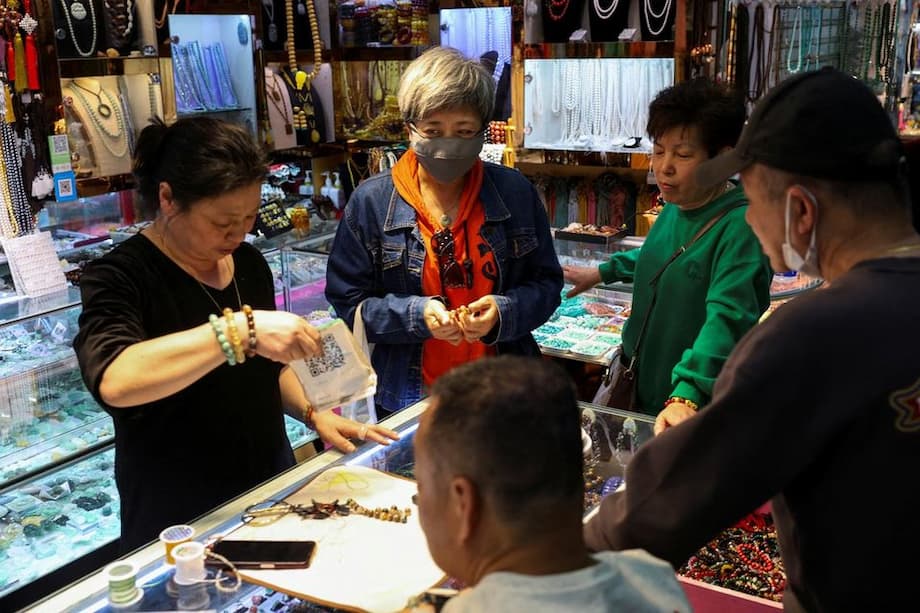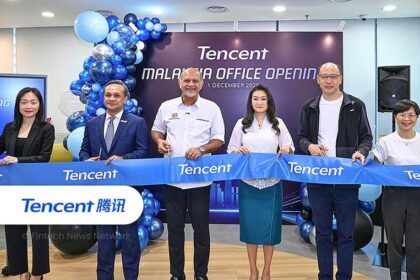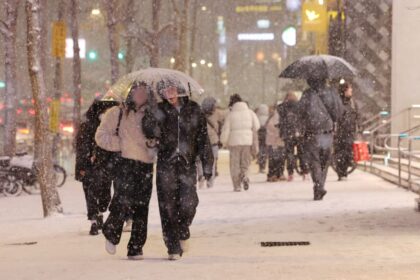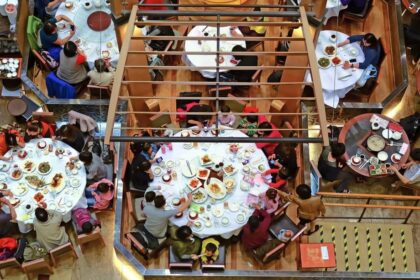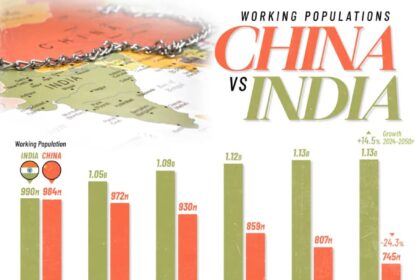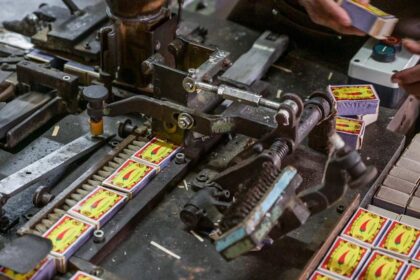China Intensifies Push for Silver Economy as Ageing Population Reshapes Consumer Market
With over 300 million seniors and a shrinking youth population, China urges businesses to innovate for elderly consumers, aiming to drive economic growth and adapt to demographic change.
In 2025, China’s government has dramatically stepped up efforts to promote the “silver economy”—the sector of goods and services tailored to its rapidly growing elderly population. With more than 300 million people aged 60 and above, and projections that this figure will reach 400 million by 2035, authorities have issued at least 20 policy statements this year alone, calling on companies to improve food, health, and senior care services, expand financial products, and develop new business models for older consumers. This push comes as China’s overall consumer spending growth slows, with younger generations facing job insecurity and economic headwinds, making the spending power of retirees increasingly vital to the country’s economic future.
- China Intensifies Push for Silver Economy as Ageing Population Reshapes Consumer Market
- Why China’s Silver Economy Is Gaining Urgency
- How Businesses Are Adapting to Serve Elderly Consumers
- Healthcare, Tourism, and Financial Services: Expanding Horizons
- Government Policy and the Broader Economic Strategy
- Challenges and Limitations: Can the Silver Economy Offset Economic Headwinds?
- Key Points
Why China’s Silver Economy Is Gaining Urgency
China’s population is ageing at an unprecedented rate. The country’s birthrate has fallen sharply, with deaths outnumbering births for the first time in decades in 2022. The number of people aged 60 and over now exceeds 290 million, and by 2035, seniors are expected to make up nearly 30 percent of the population. This demographic shift is driven by decades of the one-child policy, rising life expectancy, and changing social norms.
As the working-age population shrinks, the government faces mounting pressure to maintain economic growth and support an expanding elderly population. The silver economy is seen as both a necessity and an opportunity: it can help offset weaker spending by younger consumers and create new markets for businesses, while also addressing the needs of seniors for healthcare, leisure, and quality of life.
Economists note that many retirees today have more savings and higher pensions than previous generations, thanks to decades of economic growth. While average pensions remain modest—especially in rural areas—urban retirees with stable incomes are emerging as a powerful consumer force. According to Euromonitor International, consumer expenditure by households headed by people aged 60 and over is expected to have climbed 129 percent from 2015 to 2025, outpacing the 79 percent growth rate for the overall population. By 2040, seniors are projected to account for 34 percent of China’s total consumer spending, up from 24 percent today.
How Businesses Are Adapting to Serve Elderly Consumers
China’s silver economy is transforming industries from healthcare and technology to tourism and retail. Companies are racing to develop products and services that cater to the unique needs and preferences of older adults, who are increasingly seeking not just basic necessities but also quality, convenience, and enjoyment.
For example, jewelry firm Lao Feng Xiang recently launched AI-powered glasses designed to help seniors read small print, navigate, and even provide companionship. Tech giant Xiaomi has added elderly-friendly features to its smartphones and TVs, including remote assistance for family members to help manage smart home devices. Insurance and healthcare conglomerate Ping An has rolled out hundreds of home-based senior care benefits, including AI health monitoring systems now available in 75 cities.
The trend extends to everyday products as well. Dairy companies that once focused on infant formula are now developing specialized milk powders for seniors, and home appliance makers like Konka, Hisense, and TCL are embedding health-monitoring features into their devices. The market for senior-friendly toys and games is also booming, with brain-training and fitness toys gaining popularity among older adults who want to stay active and mentally sharp.
Li Dongmei, a former kindergarten operator in Jinan, shifted her business to serve seniors after declining birthrates and the pandemic reduced demand for children’s education. She now offers singing, dancing, and art classes for retirees, who attend year-round and show strong demand for lifelong learning and social activities. “The silver economy is now bigger than the children’s market,” Li told The New York Times, reflecting a broader shift as businesses pivot to meet the needs of an ageing society.
Senior-Friendly Toys and Leisure: A New Growth Pillar
Senior-friendly toys have emerged as a surprising new pillar of the silver economy. In Yiwu, a major trade hub, toy merchant Guan Weijiang reports that consumers aged 50 and above now make up 30 percent of his customer base, with fitness and puzzle toys among the best-sellers. On e-commerce platform Taobao, searches for “senior-friendly toys” jumped 124 percent year-on-year, and transaction volumes rose by over 70 percent. Manufacturers are adapting children’s toys for elderly users, focusing on products that improve coordination, grip strength, and cognitive function.
Yunhe county in Zhejiang province, known as China’s “Wooden Toy Capital,” is now integrating wooden toys with elderly care, developing over 200 products aimed at cognitive wellness and entertainment for seniors. Companies are collaborating with universities and Alzheimer’s prevention groups to enhance the rehabilitative benefits of these toys, and exports to international markets are rising.
Healthcare, Tourism, and Financial Services: Expanding Horizons
Healthcare is a major focus of the silver economy. China’s geriatric healthcare industry is projected to reach 963 billion yuan (US$134 billion) by 2035, according to Goldman Sachs. Wealthy retirees are expected to spend three times more than their peers on post-retirement healthcare, including services not covered by state insurance such as cataract surgeries, dental implants, and specialized vaccines. There is also growing demand for preventive care, premium treatments, and post-treatment rehabilitation.
China’s pension system is evolving to meet the needs of an ageing population. The government is encouraging the development of private pensions, with tax incentives and new products offered by life insurers. While participation remains low, contributions are expected to rise as more people plan for retirement and seek financial security.
Tourism is another fast-growing sector. Elderly Chinese are increasingly seeking leisure and cultural experiences, with the silver tourism market projected to nearly double by 2028. The Ministry of Commerce and other agencies have launched action plans to expand “silver tourism” trains, offering themed trips and age-friendly services. By 2027, China Railway aims to create more than 100 high-quality routes and 160 specialized trains for elderly travelers. According to the China Tourism Academy, seniors now account for about 64 percent of weekday travelers, making them a dominant force in domestic tourism.
Housing, Technology, and Lifestyle Innovations
Senior living communities and eldercare facilities are in high demand, especially in major cities where high-income seniors are willing to pay for comfort and quality. The eldercare market is expected to reach US$800 billion by 2025 and exceed US$3 trillion by 2030. Both domestic and foreign companies are investing in luxury senior homes, assisted living, and home-based care services.
Technology is playing a key role in making life easier and safer for seniors. Remote health monitoring systems, wearable devices, telemedicine, and smart home solutions are becoming more common. Companies are also developing products for accessibility, such as mobility aids and specialized personal care items. The government supports these innovations with favorable policies, tax incentives, and the removal of restrictions on foreign-owned eldercare institutions.
Government Policy and the Broader Economic Strategy
China’s leaders view the silver economy as a crucial part of their broader strategy to boost domestic consumption and drive economic growth. Alongside the “ice and snow” economy (winter sports and tourism) and the “debut economy” (new product launches), the silver economy is expected to reach a value of 30 trillion yuan (about US$4.2 trillion) by 2035, accounting for nearly 10 percent of GDP.
At a press conference in January, Liu Ming, director of the Department of Social Development under the National Development and Reform Commission, emphasized the need to accelerate the cultivation of leading enterprises in the silver economy, improve product quality, and establish standards for elder-friendly goods and services. The government is also developing statistical systems to track progress and identify gaps in infrastructure and service delivery.
Supportive policies include subsidies for businesses, tax breaks, and the removal of barriers to foreign investment in eldercare. The aim is to encourage innovation, expand the supply of high-quality products and services, and meet the increasingly diverse and sophisticated demands of older consumers.
Challenges and Limitations: Can the Silver Economy Offset Economic Headwinds?
Despite the rapid growth and optimism surrounding the silver economy, experts caution that it is unlikely to fully offset broader economic challenges. While some retirees have significant spending power, average pensions remain modest, especially in rural areas. Many seniors continue to be cautious with their money, and overall spending by the elderly, while rising, is still lower on average than that of younger households.
China’s younger generations face high unemployment, stagnant wages, and rising living costs, leading to weak overall consumption growth and deflationary pressures. The shrinking labor force and declining birthrate also mean fewer workers to support the growing ranks of retirees, putting strain on pension and healthcare systems.
Jacky Zhu, Head of Retail Research at JLL China, notes that the “new three generations” of consumers—young adults, middle-aged consumers, and retirees—are reshaping the market. Seniors are increasingly active and willing to spend, but revitalizing consumption will require innovation across age groups and regions, especially in underdeveloped areas where retail infrastructure is lacking.
Innovation and Opportunity: The Road Ahead for Businesses
For businesses, the silver economy presents both opportunities and challenges. Companies must move beyond low-cost, mass-market models and focus on quality, safety, usability, and design. The “new elderly,” particularly those aged 60 to 70, are better educated and more digitally connected than previous generations, making them receptive to technology and new experiences.
Cross-industry collaboration is becoming more common, with appliance makers, property developers, healthcare providers, and tech firms working together to create integrated solutions for seniors. The rise of senior-friendly products and services is also creating new job opportunities, with estimates that the silver economy could provide at least 100 million jobs by 2050.
As China’s population continues to age, the silver economy will play an increasingly important role in shaping the country’s economic and social landscape. While it may not be a panacea for all of China’s economic challenges, it offers a path for businesses to innovate, grow, and meet the evolving needs of a changing society.
Key Points
- China’s elderly population is expected to reach 400 million by 2035, driving rapid growth in the silver economy.
- The government has issued at least 20 policy statements in 2025 urging businesses to innovate for senior consumers.
- Consumer spending by households headed by people aged 60 and over is projected to outpace the overall population, reaching 34 percent of total expenditure by 2040.
- Industries from healthcare and tourism to technology and retail are adapting with senior-friendly products and services.
- Senior-friendly toys, leisure activities, and luxury eldercare facilities are booming, reflecting changing attitudes and higher spending power among retirees.
- Despite growth, average pensions remain modest and the silver economy alone is unlikely to offset broader economic challenges such as weak youth spending and deflation.
- Government policies support innovation, foreign investment, and the development of high-quality eldercare and lifestyle products.
- The silver economy is projected to reach 30 trillion yuan (US$4.2 trillion) by 2035, accounting for nearly 10 percent of China’s GDP.


